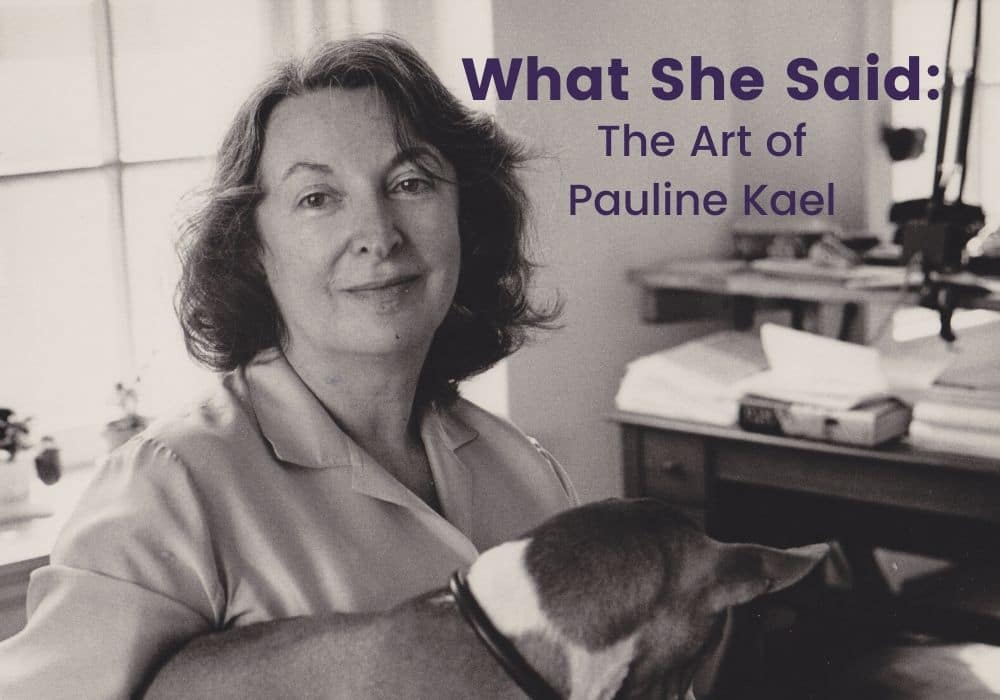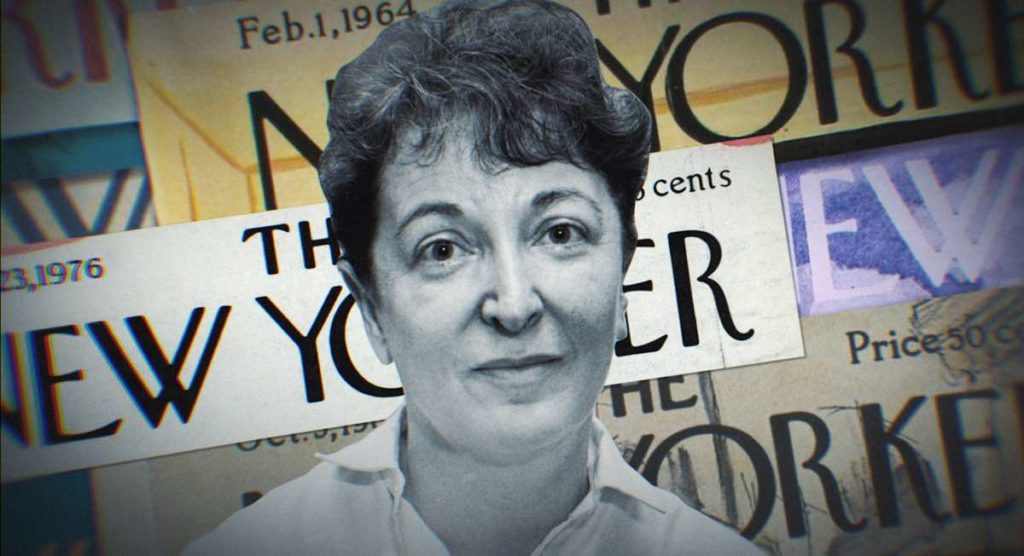What She Said: The Art of Pauline Kael is a good introduction to the legendary film critic, but ignores much of the context and legacy of her work.

Discover how documentary filmmakers think about their subjects and make their films with our ebook In Their Own Words: Documentary Masters Vol. 1, which you can purchase here.
Lots of men and a few women opine on film critic Pauline Kael’s writing, critical approach, and personality in Rob Garver’s documentary What She Said: The Art of Pauline Kael. The film features interviews with both filmmakers and fellow critics who loved, read, and were influenced by Kael, among them Quentin Tarantino, David O. Russell, Paul Schrader, David Edelstein, and Stephanie Zacharek. Taken together, it serves as a kind of Kael 101 seminar: who she was, the filmmakers she championed (Scorsese, Altman, and Bertolucci among them), and her equal parts charismatic and prickly personality. Even as someone who has read her extensively, there was much to learn about how her writing influenced others and some of her more surprising opinions.
But What She Said: The Art of Pauline Kael is frustratingly opaque about the context in which Kael was writing and the legacy she has since left. Though we’re told film criticism was a boys’ club (it still is) and this meant she had trouble accessing screenings early in her career, we get little sense of how much discrimination she really faced. Mostly, she’s portrayed as a kind of shit-disturber whose opinions were often held as gospel by those who read them. Yet she spent most of her career at The New Yorker, a magazine very much at the epicentre of acceptable high culture; she may have seen the men at The New York Times as her adversaries, but she was hardly lacking a platform.

At the same time, her deliberately informal prose style, tendency toward hyperbole, and inconsistent opinions are all discussed as part of her charm and how she raised film criticism into an expressive art in itself. Yet how did her writing compare with her peers? One of the most famous critics to be seen as a direct descendent of her style is Roger Ebert, who isn’t even mentioned in the film, nor is there any thought put into how Kael’s attempt to put herself in the place of the punter has also helped lead to the online ‘hot take culture’ we now live in — where arguing an opinion with evidence is often seen as less important than expressing one at all. Can this be traced back to Kael? The film never touches on this.
Given the increasing attention that has been drawn to the lack of diversity — and women — in film criticism in recent years (especially the research out of Annenberg at USC), a closer examination of what it meant to be a woman in film criticism at the time would have been welcome. Did Kael champion films — especially by and about women or other minorities — that the dominant male critics ignored or simply didn’t get? Did she use her influence to help other women advance in the field? What She Said: The Art of Pauline Kael mentions how she placed friends of hers, like Paul Schrader, in film critic jobs at other publications, but is notably quiet on the degree to which Kael became the outlier woman in a boys’ club, benefiting from its privileges. At the same time, some of her opinions have aged particularly badly, like her championing of Last Tango In Paris, given actress Maria Schneider has recently come forward with accusations of sexual assault on set. It’s here where it becomes most obvious that the film is directed by a man. Kael saw herself as a feminist, but did her feminist actions have limitations? Garver never engages with this, a shame given that no female critic has been as dominant a cultural force since Kael.
Get the ebook all about documentary filmmaking!
Discover great interviews with documentary filmmakers
Over and over, we drop you into the minds of some of today’s most influential documentarians.

